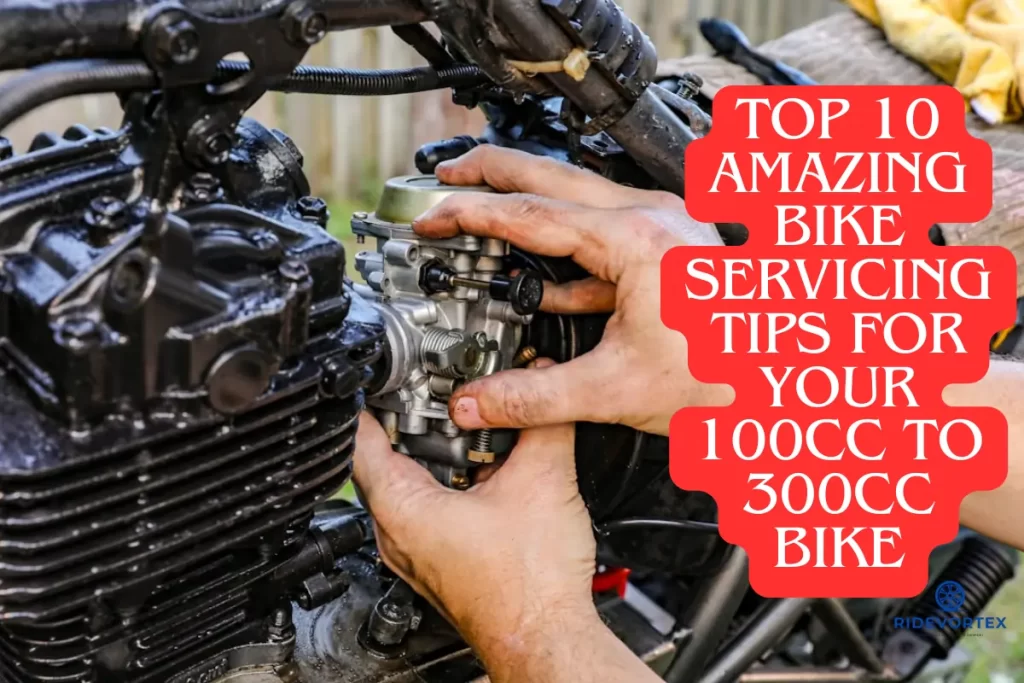If you own a bike with an engine size between 100cc and 300cc, you’re part of the majority on Indian roads. Proper maintenance and timely servicing of your bike are crucial to keep it running smoothly and to save on costly repairs. Here, we share essential bike servicing tips that will help you maintain your bike efficiently, reduce maintenance expenses, and even increase its resale value. Let’s dive into these practical tips that every bike owner should know.

How Frequently Should You Service Your Bike?
Many riders tend to service their bikes once every six months, which might seem ideal. However, the right servicing frequency depends largely on your riding habits and the distance you cover. Regular servicing can literally cut your maintenance costs in half, while neglecting timely service causes expenses to pile up.
Here’s a good rule of thumb for service intervals based on engine size:
- 100cc bikes: Service every 2,500 to 3,000 kilometers
- 150cc bikes: Service every 3,500 to 4,000 kilometers
- 200cc bikes: Service every 4,000 to 4,500 kilometers
Generally, a 3,000 to 4,000 km interval works well for most bikes. Avoid the mistake of delaying servicing until serious problems arise after 5,000-6,000 kilometers — this only increases costs and risks breakdowns.
Make Notes of Bike Issues
One of the most overlooked yet vital steps before servicing is noting down any unusual sounds or problems you notice while riding, such as chain noise or brake issues. Most people forget these details when they reach the service center, but sharing them upfront can solve 90% of maintenance problems early on.
Use your phone or a small notebook to jot down these observations. This simple habit helps mechanics diagnose issues quickly and prevents minor problems from turning into expensive repairs.
Maintain a Service Record
Keeping a detailed service diary or record is a game-changer. After each service, write down what work was done and the date. This record offers multiple benefits:
- Helps you track what has been maintained and what needs attention in upcoming services.
- Boosts your bike’s resale value by proving it has been well cared for.
- Facilitates warranty claims and part replacements.
Always save your job cards and bills safely; they act as proof of regular maintenance and can help you get more money when selling your bike.
Choose Authorized Service Centers Over Cheap Garages
While budget-friendly garages may seem attractive, they often provide substandard servicing. Authorized dealerships, although costlier, have trained mechanics who know exactly what your bike needs. They use genuine parts and follow manufacturer guidelines, ensuring long-term reliability.
Always carry your checklist of problems and notes to the service center to communicate clearly and get the best service possible.
Engine Oil: The Lifeblood of Your Bike
Changing engine oil on time is critical. For most bikes, engine oil should be replaced every 3,000 to 5,000 kilometers. While synthetic oil offers better performance, it comes at a higher price. For 100cc and 150cc bikes, using regular mineral oil is perfectly fine and more cost-effective.
Remember, clean and fresh engine oil reduces friction, keeps engine parts healthy, and improves fuel efficiency.
Be Present During Your Bike’s Service
If possible, try to be physically present during the servicing process. Although this might not always be feasible, spending 1 to 1.5 hours at the service center helps you ensure that the mechanic is attentive and uses the right parts and fluids.
Your presence can prevent errors and gives you confidence that the job is done properly.
Check Coolants and Fluids Regularly
Along with engine oil, your bike’s coolant and other fluids should be checked and topped up during every service. Proper fluid levels prevent overheating and keep your bike running smoothly, especially during hot or rainy seasons.
Brake Pads and Discs: Keep Them in Top Shape
Brake performance is crucial for safety. Check your brake discs and pads for warping or creasing, especially during the rainy season when brakes can wear out faster. Maintaining good brakes helps avoid accidents and costly replacements.
🚀 Related Electric Bike Reviews:
Battery Health Matters
The battery life of your bike typically lasts 2 to 3 years. After this period, battery performance can drop by 50-80%, affecting your bike’s start-up and electrical systems. Replace the battery promptly when its health deteriorates. If your battery is still under warranty, make sure to claim free replacement or servicing to avoid unnecessary expenses.
Always Take a Test Ride After Servicing
Before leaving the service center, always test ride your bike. This helps you verify if the brakes are working well, the engine runs smoothly, and if any noises persist. If you detect issues during the test ride, inform the mechanic immediately so they can fix them on the spot.
Skipping this step might mean paying for servicing without resolving the underlying problems.
Keep Your Service Records Safe
Lastly, maintain all job cards and bills safely. These documents act as historical proof of your bike’s maintenance and are invaluable when you decide to sell the bike. A well-documented service history can significantly increase your bike’s resale value.
Conclusion
Regular and timely servicing is the key to prolonging your bike’s life, improving performance, and reducing maintenance costs. From making notes of issues to choosing authorized service centers and keeping detailed records, these simple steps can save you a lot of money and hassle in the long run.
Remember to check your engine oil, brake pads, coolants, and battery health regularly. And never forget to test ride your bike after servicing to ensure everything is in perfect order.
By following these top 10 amazing bike servicing tips, you’ll keep your bike running smoothly and safely on the road. Happy riding and stay safe!












